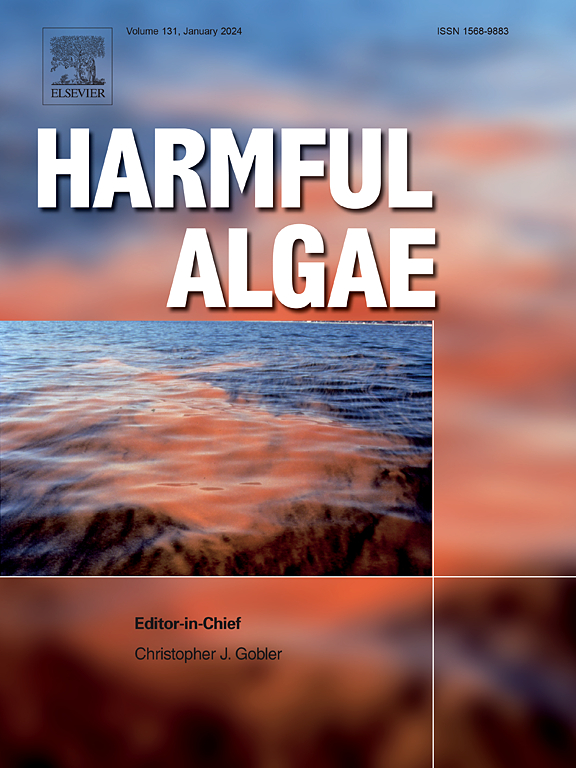Light limitation during a compound drought and heat event inhibited algal blooms in a nutrient-rich shallow lake
IF 5.5
1区 生物学
Q1 MARINE & FRESHWATER BIOLOGY
引用次数: 0
Abstract
Extreme weather events caused by climate change have a significant impact on the lake ecosystems. While many researchers believe that heatwaves and droughts may enhance algal bloom, heatwaves and droughts reduced algal blooms in Lake Chaohu during the spring and summer of 2022. To investigate the mechanism behind this phenomenon, on-site sampling and online monitoring were conducted in Lake Chaohu from 2019 to 2022. The results showed that non-algal turbidity played a critical role in temporarily inhibiting algal blooms. The water level in spring and summer of the drought year was 1.2 m lower than that in conventional years, resulting in the area of shoals where resuspension could occur being nearly 4 times larger than in conventional years. Strong resuspension caused turbidity in spring and summer to be more than double that of conventional years, sharply reducing gross primary productivity by 39 %, which led to lower chlorophyll a concentration than in conventional years. These results indicate that drought does not necessarily exacerbate algal blooms, and changes in shoal area due to water level fluctuations are a key factor affecting algal blooms in shallow lakes prone to resuspension. Furthermore, these results suggest lake managers can control algal blooms by adjusting water level to increase turbidity during or before algal bloom seasons.

在复合干旱和炎热事件期间的光照限制抑制了营养丰富的浅湖的藻华
气候变化引起的极端天气事件对湖泊生态系统产生了重大影响。虽然许多研究人员认为热浪和干旱可能会加剧藻华,但热浪和干旱在2022年春夏期间减少了巢湖的藻华。为探讨这一现象背后的机制,2019 - 2022年在巢湖进行了现场采样和在线监测。结果表明,非藻浊度在暂时抑制藻华中起着关键作用。干旱年春夏水位较常年低1.2 m,可发生再悬浮的浅滩面积较常年增加近4倍。强再悬浮导致春夏季浑浊度是常规年的两倍以上,总初级生产力急剧下降39%,叶绿素a浓度低于常规年。这些结果表明,干旱并不一定会加剧藻华,水位波动引起的浅滩面积变化是影响容易再悬浮的浅湖藻华的关键因素。此外,这些结果表明湖泊管理者可以通过在藻华季节或藻华季节之前调整水位来增加浊度来控制藻华。
本文章由计算机程序翻译,如有差异,请以英文原文为准。
求助全文
约1分钟内获得全文
求助全文
来源期刊

Harmful Algae
生物-海洋与淡水生物学
CiteScore
12.50
自引率
15.20%
发文量
122
审稿时长
7.5 months
期刊介绍:
This journal provides a forum to promote knowledge of harmful microalgae and macroalgae, including cyanobacteria, as well as monitoring, management and control of these organisms.
 求助内容:
求助内容: 应助结果提醒方式:
应助结果提醒方式:


